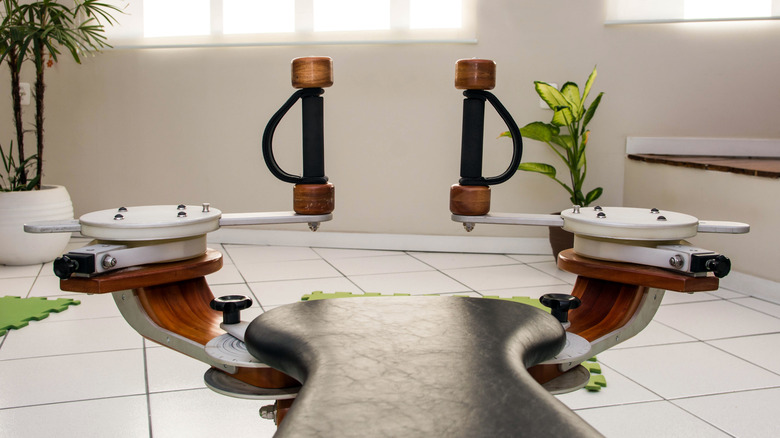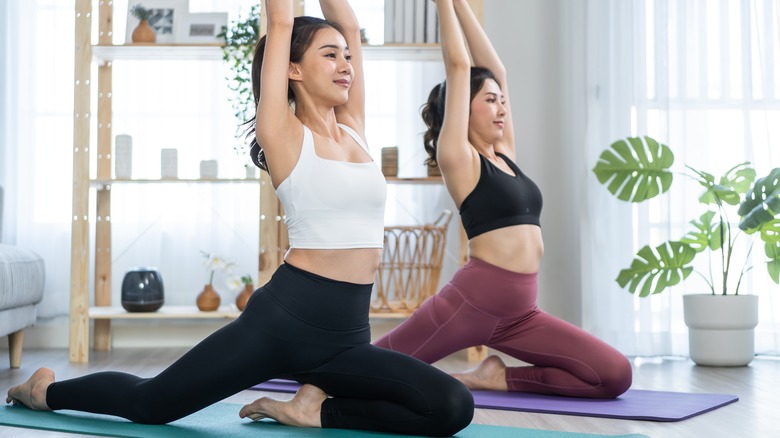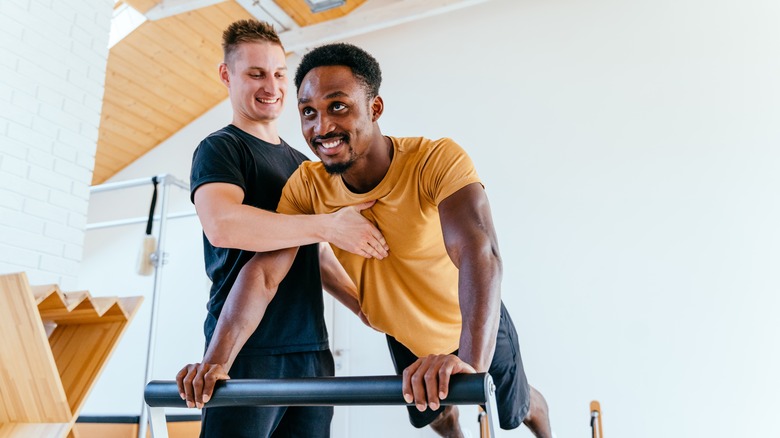What Is Gyrotonic Exercise?
More and more people are turning to mind-body practices such as yoga and meditation, according to the Centers for Disease Control and Prevention. After a ruptured Achilles tendon sidelined his ballet career, Juliu Horvath turned to yoga and meditation, where he became fascinated with how moving his body could help him heal. He developed "Yoga for Dancers" and brought it to the professional dance community. He eventually retooled his classes to include a wider, non-dancing audience. He called it Gyrokinesis. As Horvath continued to develop his method of movement, he included special pieces of equipment and called it Gyrotonic.
Lady Gaga, Shaquille O'Neal, and tennis player Andy Murray rave about the Gyrotonic method. Tracee Ellis Ross posts some of her Gyrotonic breakthroughs on Instagram. Physical therapists and rehab clinics have equipped their facilities with the Gyrotonic expansion system, which looks like an elaborate cable machine you might see at the gym. What makes Gyrotonic exercise different from others?
Gyrotonic exercise compared to yoga and Pilates
If you look at some of the movements from a Gyrokinesis class, you could see how they have their roots in yoga and dance. Whereas a yoga class might hold one static pose and then move slowly to the next, Gyrokinesis and Gyrotonic exercises emphasize continual, spiraling movements in rhythm. These flowing movements make them also similar to tai chi.
Gyrotonics also resembles Pilates because both use machines. Gyrotonics exercises use the Gyrotonic expansion system of pulleys and weights that add tension to the body while participants move in circular patterns, whereas Pilates has the spring-based reformer. Both Gyrotonics and Pilates have mat versions for those who don't have the equipment.
Beatriz Pascual, a Gyrotonic instructor based in the United Kingdom, tells The Guardian, "Gyrotonic may resemble Pilates, but it is much more like yoga in its origin and breathing techniques. Pilates followers often make the mistake of thinking it's the same and then find it difficult to master the breathing, which is specific to each particular movement pattern."
The benefits of Gyrotonic exercises
Gyrotonic and Gyrokinesis exercises help build strong joints because they work them through their full range of motion, and they emphasize a strong spine for overall strength. It also teaches you full-body awareness in simple movements you do every day, such as picking something up from the floor.
Although there are a lot of testimonials of how Gyrotonic exercises can improve your health, there isn't much scientific evidence that says it's more beneficial than other mind-body or stretching exercises. A 2019 study in the Journal of Exercise Rehabilitation assigned 26 people with lower back pain to do either Gyrotonic exercises or trunk stability exercises three times a week for four weeks. Both groups showed improvements in spine stability and function, but one wasn't better than the other.
According to a 2016 study in the Journal of Physical Therapy Science, Gyrotonic exercises improved the walking pattern of women with lower back pain. Gyrotonic exercises three times a week for eight weeks also improved fitness levels in older women, according to a 2020 study in The Asian Journal of Kinesiology — however, women who used resistance bands saw similar levels of fitness improvement.



